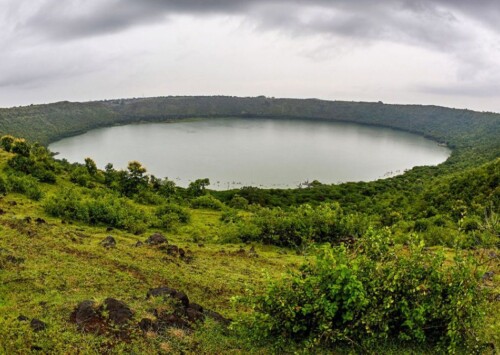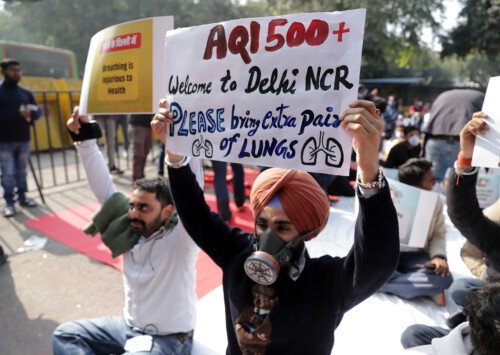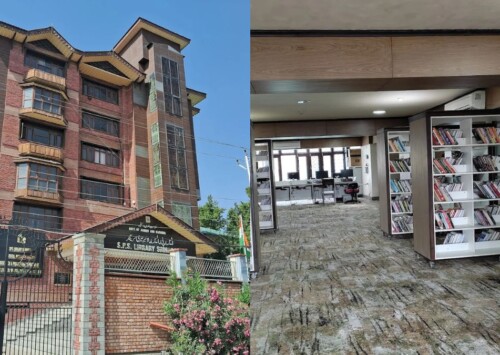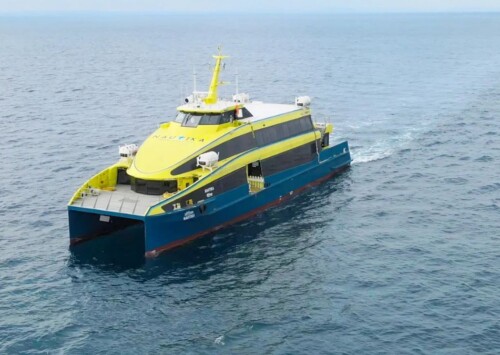COP30: Flood of climate finance needed, not a trickle
North-South divide now wider than Amazon

The planet's future hangs by a delicate thread at the COP30 meet in Belem (Photo: Kiara Worth | UN Climate Change)
At the climate change meeting, COP30, which began earlier this week at Belem in Brazil, the divide between the developed and developing nations continues to widen as the Global North has consistently refused to honour its commitments in terms of cuts in emissions as well as providing climate finance to the developing countries as per numerous commitments made at various COP gatherings.

The planet's future hangs by a delicate thread at the COP30 meet in Belem (Photo: Kiara Worth | UN Climate Change)
Amazon is the largest river in the world by discharge volume of water. That generous water volume is poured into Atlantic Ocean where the city of Belem is situated. And that is the site of the 30th Conference of Parties (COP30) to United Nations Framework Convention on Climate Change (UNFCCC), taking place from November 10-21.
As has been the norm for years, the meeting so far appears deadlocked, with a wide gulf between the rich and the poor countries and that gulf is now bigger than the Amazon River that flows through Belem.
Against the backdrop of generous flow of water from Amazon pouring into Atlantic at Belem, the meagre flow of finance provided by the developed countries, Global North, to developing countries, Global South, is the single most critical issue threatening the very core of the negotiations at Belem.
Indeed, Amazon cuts through Brazil dividing it into North and South. The broken promises by Global North to provide the adequate, accessible, and predictable climate finance to Global South right from the Kyoto Protocol in 1997 to the Paris Agreement in 2015, have now resulted into a seemingly unbridgeable chasm of trust among negotiators. The continued failure to provide agreed financial assistance represents a fundamental breach of the principle of “Common But Differentiated Responsibilities and Respective Capabilities” (CBDR-RC).
As negotiations stumble at COP30, Brazil’s gallant efforts to add fresh air coming from Amazonian forest in the global lungs are proving to be nothing short of monumental adventure in terms of ambitions, aspirations to accelerate the implementation.
It is time to deep-dive into the origin of climate finance, its historical progress and stark realities which are already knocking the world due to of lack of climate finance flow that keeps the countries far from meeting the ambitious goals of the climate agreements. It would certainly help, as adage goes, seeing the forest for the trees! The bigger picture would emerge to find the path forward through Amazonian forest! The success of COP30 will hinge entirely on its ability to deliver a breakthrough on this intractable issue of climate finance.

At COP30, delegates need to cross the gulf on climate finance that is now bigger than Amazon (Photo: Kiara Worth | UN Climate Change)
The principle of climate-finance is not an afterthought but the bedrock of global climate cooperation. It was formally established in the 1992 United Nations Framework Convention on Climate Change (UNFCCC).
All the three agreements, the UNFCCC, the Kyoto Protocol, and the Paris Climate Agreement, indicate the need for climate-finance to developing countries. The Kyoto Protocol provided the first mechanism, and the Paris Agreement of 2015 built and expanded these obligations. Paris Agreement reinforced the fact that developed nations should commit and lead in providing ‘new and additional’ finance to meet agreed full costs for both mitigation and adaptation in developing nations. This was a recognition of the historical responsibility of industrialised nations for the majority of cumulative greenhouse gas emissions and their greater economic capacity to address the problem. That is how the principle of Common But Differentiated Responsibilities (CBDR) emerged in international environmental agreement.
Coincidentally, it was conceived in 1992 and in Brazil, itself. The idea was first introduced and formalised in international environmental negotiations in 1992, at the United Nations Conference on Environment and Development (UNCED), also known as the Earth Summit, that was held in Rio de Janeiro, Brazil!
The history of climate finance is a chronicle of ambitious pledges followed by disappointing and failed delivery. Often quoted promise of USD 100 billion per annum given in Copenhagen COP of (2009) was a pivotal moment. It clearly stated that starting from USD 10 billion per year developed countries together would mobilise USD 100 billion per year by 2020 as grant climate finance. This was a political commitment, not a legally binding one, which created significant loopholes. Later the time line of reaching USD 100 billion per year was extended to 2025.
In 2024 at COP29 at Baku in Azerbaijan last year, the Baku Climate Unity Pact was agreed which stated that developed countries will lead in mobilising at least USD 300 billion per year for developing countries by 2035, thereby tripling the target of USD 100 billion. At the same time all actors, public and private, willing and ready, were urged to mobilise a total of at least USD 1.3 trillion per year by 2035. This enhanced climate finance goal is called New Collective Quantified Goal ( NCQG) and includes funds for mitigation and adaptation.
Even though climate finance goals have successively increased in quantum, they have remained a mirage as in reality, no developed country has met its commitment even once throughout the long process. This has turned climate finance into the elephant in the room in each COP meeting, which few want to acknowledge but which will remain there for as long as COP meetings are held.
According to the most recent data from the OECD (2022), developed countries mobilised USD 89.6 billion in 2021. While this is an increase, it masks critical problems that cumulative short fall till 2021 runs into hundreds of billions of dollars. Whatever finance that is already provided, most of it is in loans and not as grants, which is a clear violation of numerous agreements.
That not only resulted in emission-rise and temperature-rise but also rise in debt burden of poor developing nations. About 70 pc of the climate finance has gone to mitigation or reducing emissions and rest for adaptation that has cost unbearable damage to the economies poor countries, notably the Small Island Developing States (SIDS) and many sub-Saharan countries in Africa. The access to the climate finance is engulfed in complicated process that keeps poor countries trapped in bureaucracy mess .
The UNFCCC estimates that developing countries will need about USD 5.9 trillion by 2030 to implement their climate action plans (NDCs). The UNEP Adaptation Gap Report 2023 estimates adaptation costs alone are USD 215-387 billion per year. The Loss and Damage Fund, operationalised at COP28, has received initial pledges of around USD 700 million, a drop in the ocean compared to the estimated USD 400 billion annually in climate-related damages faced by developing countries.
Against the huge scarcity of climate aid are certain contrarian and even hypocritical methods, basically diversion of funds by developed countries to deploy them in providing the subsidies on fossil fuels and expenditure on weaponising geopolitical conflicts is not only shocking but ethically unjust.
The profound misalignment of global priorities are not only disturbing but are suicidal. What emerges is the fact that it is not a lack of finance but a lack of will to allocate the available finance for addressing climate crisis. The argument of ‘lack of funds’ from developed nations collapses when viewed against their other spending priorities.
The shocking example is the cost of subsidies for fossil fuel exploration and consumption. The fossil fuel subsidies in 2022, mainly by developed nations were USD 1.4 trillion in 2022 and USD 1.1 trillion in 2023. The United States, the United Kingdom, Norway, Canada, and Australia continue to approve new oil and gas fields. The ‘drill, baby, drill’ mentality directly contradicts their climate rhetoric.
The case of energy hypocrisy is even disturbing and disruptive. Many developed nations are rapidly building domestic renewable energy capacity, while continuing to export fossil fuels, practices best exemplified by the United States, Australia and Norway. This ‘export of emissions’ allows them to green-wash their own emissions, while harming those in developing countries in two ways, through supply of fossil fuel and denying the climate finance to them.
Also, the rich world has shown that there is money for financing countries for wars with their neighbours, but not for war on climate. According to the Stockholm International Peace Research Institute (SIPRI), global military expenditure reached USD 2.24 trillion in 2022 and the military budget of the US alone was over USD 800 billion in 2023. A fraction of this would eclipse the entire annual USD 100 billion climate finance goal. The ongoing wars in Ukraine and the Middle East represent trillions of dollars in expenditure that could have been redirected to the existential climate crisis.
Inadequate climate finance is the linchpin of the dreadful failure of humanity. Without solving the finance issue, the global goal of limiting warming to 1.5°C and enhancing adaptive capacity are simply unattainable.
In a lighter mood, the delegates are talking that COP30 has turned out to be accurate as just about 30 pc of the world leaders are expected to turn up! Pun apart, the world has the potential to be a watershed moment, but only if the political courage and technology-savvy GenZ prevail in all the agenda items agreed in Belem. The setting in Brazil, a key developing nation, led by a recognised champion of environment and equity, in the person of President Luiz Inácio Lula da Silva or Lula will amplify the Global South’s voice if the top-down approach of world-leaders to people is integrated bottom-up approach of youth to the country.
The success of COP30 will be measured by a single, non-negotiable outcome, the adoption of a New Collective Quantified Goal. It is the bridge on the massive, but illusionary Amazon that currently divides the rich world from the poor. It is illusionary as climate change will not set just the poor countries on fire or the rising sea waters will not just submerge the SIDS, these catastrophes will engulf the whole planet and the whole world has been watching repeated incidents around the world as thankfully, Mother Nature has not learnt to discriminate between the rich and the poor. The sooner the rich countries realise this basic fact and start living up to their pledges, the better it will be for the whole world.
The bridge across this illusionary Amazon, does not have to be built, it is right there. The rich countries just need to cross it and redeem their pledges!
(Rajendra Shende is a former Director UNEP, Founder Director Green TERRE Foundation, coordinating lead author, IPCC that won Nobel peace prize, Prime Mover SCCN, IIT Alumnus. The views expressed here do not necessarily reflect those of Media India Group.)









